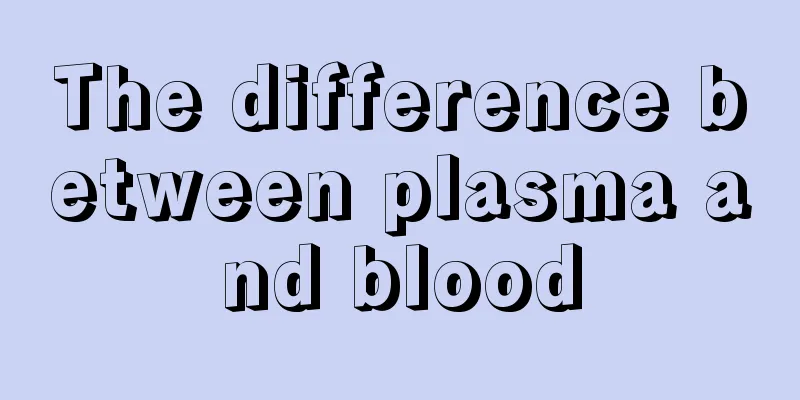The difference between plasma and blood

|
Plasma and blood are two important components of the human body. Although the two look very similar, there are actually huge differences between them. Generally speaking, blood includes plasma, which is an important component of blood. In addition, there are certain differences in their specific functions. Below, we will introduce you to the relevant knowledge about plasma and blood in detail. 1. What is plasma? The main function of plasma is to carry blood cells, transport substances needed to maintain human life activities and waste produced in the body, etc. Plasma is equivalent to the intercellular matrix of connective tissue. Plasma is an important component of blood and is a light yellow liquid (because it contains bilirubin). Among the chemical components of plasma, water accounts for 90~92%, and the other 10% is mainly solute plasma protein. It also contains electrolytes, nutrients, enzymes, hormones, cholesterol and other important components. Plasma protein is a general term for a variety of proteins, which can be divided into three categories: albumin, globulin and fibrinogen by the salting-out method. 2. What is blood? Blood is a red, opaque, viscous fluid that flows in human blood vessels and heart. Blood is composed of plasma and blood cells. One liter of plasma contains 900-910 grams of water, 65-85 grams of protein and 20 grams of low molecular substances. Low molecular substances include a variety of electrolytes and organic compounds. Blood cells include three types of cells: red blood cells, white blood cells and platelets. The average lifespan of red blood cells is 120 days, that of white blood cells is 9-13 days, and that of platelets is 8-9 days. Generally speaking, 40 ml of blood cells age and die per person every day. At the same time, a corresponding number of cells are generated. The functions of blood include blood cell function and plasma function. It has four functions: transportation, regulation of human body temperature, defense, and regulation of human body osmotic pressure and acid-base balance. 3. What is the difference between plasma and blood? Plasma is the part of the blood that remains after blood cells and platelets are removed. It is a translucent, pale yellow, viscous liquid that accounts for about 55-60% of the blood. Plasma contains about 92% water, and the rest is globulin, fibrinogen, enzymes, hormones and inorganic salts. When blood flows out of blood vessels, the fibrinogen in it turns into fibrin and coagulates with blood cells to form clumps, which has a hemostatic effect. The pale yellow transparent liquid remaining after removing fibrinogen from plasma is called serum, which will not coagulate. |
>>: What can’t you eat before donating plasma
Recommend
What are the causes of acne on the jaw lymph nodes
When there is any abnormality in the body, it nee...
What to do if you get diarrhea after drinking tap water
Nowadays, every household uses tap water, but man...
What's wrong with the pimples on my mouth
No matter what the cause is, acne represents exce...
How is ascites in advanced liver cancer treated? This is the recommended treatment for ascites in advanced liver cancer
Ascites treatment is actually a treatment for adv...
What are the wonderful uses of scallion whites
In autumn and winter, many people are prone to ca...
How long does it take to change your physique by being a vegetarian?
Modern people pay more and more attention to thei...
The effect of Hunyuan lying
In life, we will find that many middle-aged and e...
Membranous nephropathy stage II and uremia
I believe everyone is aware that uremia is a very...
How to prevent the occurrence of thyroid cancer
How to prevent thyroid cancer? Although modern pe...
What are the causes of lung cancer
Lung cancer is extremely harmful to our body, so ...
What early symptoms of bladder cancer can be found during routine examinations
Generally, the cure rate of bladder cancer is ver...
Transient myocardial ischemia symptoms
Many people pay more attention to heart health, b...
The difference between crow's feet and laugh lines
Many older people will have various wrinkles on t...
The purple mouth is caused by
Purple lips are a problem that many people will e...
What are the signs of cerebral hemorrhage
Cerebral vascular hemorrhage is what we usually h...









